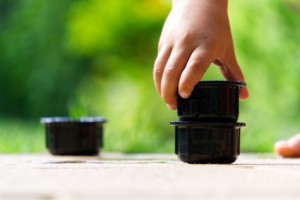Is your child struggling to speak? A speech disorder where children have issues moving muscles related to speaking correctly is called childhood apraxia. The issue itself is within the brain, sending signals that are not correct to the body parts related to speech. Speech therapy can help a child with apraxia by retaining their brain and enabling them to speech normally, without struggling.
 “In order for speech to occur, messages need to go from your brain to your mouth. These messages tell the muscles how and when to move to make sounds. When a child has apraxia of speech, the messages do not get through correctly. The child might not be able to move their lips or tongue in the right ways, even though their muscles are not weak. Sometimes, the child might not be able to say much at all,” ASHA.
“In order for speech to occur, messages need to go from your brain to your mouth. These messages tell the muscles how and when to move to make sounds. When a child has apraxia of speech, the messages do not get through correctly. The child might not be able to move their lips or tongue in the right ways, even though their muscles are not weak. Sometimes, the child might not be able to say much at all,” ASHA.
Unfortunately, childhood apraxia can affect much more than a child’s speech. It can create issues and hinder every detail of learning. This includes difficulty writing, reading, and development of motor skills.
ASHA list the signs and symptoms of Childhood Apraxia
Not all children with Childhood Apraxia of Speech are the same. Your child may show some or all of the signs below. You should talk to your doctor and see an SLP if your child is older than 3 years and
-
- does not always say words the same way every time;
- tends to put the stress on the wrong syllable or word;
- distorts or changes sounds; or
- can say shorter words more clearly than longer words.
 Children with Childhood Apraxia of Speech may have other problems, including
Children with Childhood Apraxia of Speech may have other problems, including
-
- difficulty with fine motor skills;
- delayed language; or
- problems with reading, spelling, and writing.
Those with childhood apraxia can also experience hypersensitivity, having a negative reaction when exposed to certain sensations, fabrics, or materials. It can also affect with their overall coordination.
How is childhood apraxia treated?
Like with other speech and language disorders, the sooner childhood apraxia is diagnosed and treated, the better the outcome for the child.
To help a child make sounds correctly, take the time to repeat sounds, syllables, and words. Also, slowly demonstrate how words and sounds are formed.


